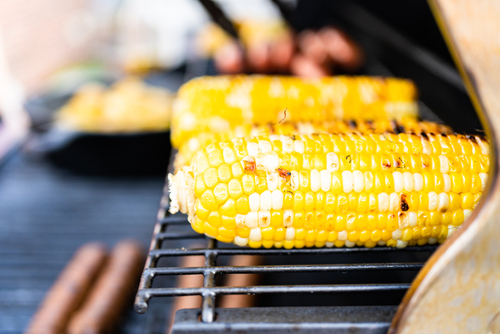Written on: September 23, 2024
 From easier cooking to healthier foods to safety, there are plenty of reasons why propane is the favorite choice for outdoor grilling. Foodies and professional chefs prefer the precision and power of cooking with gas, and it’s true in a kitchen or on a patio. Even if you just want to grill up some chicken or burgers for the family on a Saturday night, propane makes the process easy, from lighting up to cleaning up.
From easier cooking to healthier foods to safety, there are plenty of reasons why propane is the favorite choice for outdoor grilling. Foodies and professional chefs prefer the precision and power of cooking with gas, and it’s true in a kitchen or on a patio. Even if you just want to grill up some chicken or burgers for the family on a Saturday night, propane makes the process easy, from lighting up to cleaning up.
Here’s what you need to know!
You can get a propane tank for any size grill.
The smallest are three to five pounds and are perfect for small portable grills. You can pick them up at large grocery stores, big box stores, camping supply stores and even hardware stores. They last for between 5 and 7 hours of grilling.
The most common size for a full-size portable grills is 20 pounds. While most portable tanks don’t come with a gauge, a good rule of thumb is that a standard 20-pound portable propane tank should get you through about 25 grilling sessions.
Who keeps track of how many times they’ve used their grill? You could go nuts with a chart next to your spatula and tongs. Or, you can use these handy tricks to check how much propane is left in the tank.
Of course, to truly ensure you always have propane for the grill is to hook up to your home’s supply with a built-in grill. Our team of pros can help you create the perfect propane grilling setup for your outdoor space.
Not sure you know how to replace your grill tank? It’s as easy as 1-2-3.
To reconnect a full tank, simply follow those steps in reverse. Be sure the tank valve is closed when you reconnect the pressure regulator.
If you’re using a small camping grill with a three- or five-pound tank, it’s even easier. The tank typically just screws onto the valve. Follow the instructions for your grill.
Browse our selection of deluxe built-in models with multilevel grills, griddle attachments and side burners, rotisseries and more for restaurant-quality results from all the leading brands including Aurora, Echelon, Choice and Legacy. Need a freestanding model? We can help you there as well, with models that offer all the options of a built-in without the build-out. Contact us for more information today.